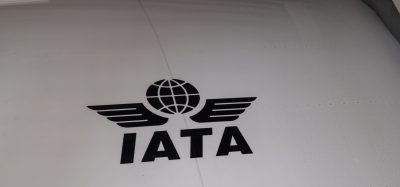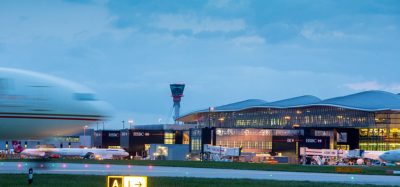FAA to increase efficiency and reduce aircraft emissions in Northern California airspace
- Like
- Digg
- Del
- Tumblr
- VKontakte
- Buffer
- Love This
- Odnoklassniki
- Meneame
- Blogger
- Amazon
- Yahoo Mail
- Gmail
- AOL
- Newsvine
- HackerNews
- Evernote
- MySpace
- Mail.ru
- Viadeo
- Line
- Comments
- Yummly
- SMS
- Viber
- Telegram
- Subscribe
- Skype
- Facebook Messenger
- Kakao
- LiveJournal
- Yammer
- Edgar
- Fintel
- Mix
- Instapaper
- Copy Link
Posted: 19 March 2012 | FAA | No comments yet
Collaborative effort to make ATC more efficient, help airlines improve on-time performance…


Acting Federal Aviation Administrator Michael Huerta and aviation partners today kicked off a collaborative effort to make air traffic control more efficient, help airlines improve on-time performance, and reduce emissions generated by aircraft flying into and out of Northern California airports.
“By working together, the FAA and our aviation partners are improving flying for the general public, airlines and the country’s economy,” said U.S. Transportation Secretary Ray LaHood. “Designing an aviation system for the 21st century is a crucial component of an economy built to last.”
“The Federal Aviation Administration and members of the aviation industry are teaming up to create satellite-based arrival and departure routes that will make some of the most complex airspace in the country some of the most efficient,” Huerta said. “Implementing these NextGen procedures will result in more direct flight routes, fewer delays and an even safer, greener flying experience.”
As part of the FAA’s NextGen modernization program, the Metroplex initiative will improve the flow of air traffic into and out of the major airports in Northern California by making airspace more efficient. A Metroplex is a region with multiple airports serving major metropolitan areas where heavy airport activity and environmental constraints combine to hinder the efficient movement of air traffic. Metroplex initiatives are under way or planned in 21 metropolitan areas across the country.
The Metroplex initiative is based on satellite navigation, or Performance-Based Navigation (PBN), which is a key component of NextGen. PBN enables pilots to fly aircraft using radar or satellite coverage, or by using the on-board flight management system. PBN allows shorter, more direct routes that reduce flight time and fuel consumption, and result in fewer carbon emissions.
The FAA estimates that 1.5 million fewer nautical miles will be flown into and out of Northern California annually, based on current flight plan miles filed. This equates to 2.3 million fewer gallons of fuel used and a reduction in carbon emissions of 23,000 metric tons.
Launched today, this collaborative, regional partnership includes the FAA, the National Air Traffic Controllers Association (NATCA), United Airlines, Southwest Airlines and the airports in San Francisco, Oakland, San Jose and Sacramento.
“The Bay Area is fortunate to have such a strong, effective team working on the Metroplex project. The collaboration between management, NATCA and the industry has been outstanding,” said Steve Hefley, NATCA’s lead local representative on the team. “We plan to deliver on our promise. Air travelers will benefit greatly from an even safer and more efficient system.”
“Southwest Airlines is committed to the design and implementation of safe and efficient flight procedures that benefit the traveling public and the communities surrounding the Northern California Metroplex,” said Southwest Airlines Captain David Newton, the carrier’s senior manager for NextGen and airspace.
The Metroplex work teams will explore and develop strategies to streamline airspace over Northern California to help reduce airspace complexity for air traffic controllers and flight crews. The strategies include:
- Creating Optimized Profile Descent (OPD) procedures into San Francisco, Oakland, San Jose and Sacramento. OPDs allow pilots to almost idle the engines while the aircraft descends so they glide down without leveling off, like sliding down a bannister. OPDs reduce fuel consumption, carbon emissions and noise.
- Separating the arrival flows into San Francisco, Oakland, San Jose and Sacramento to reduce congestion. This will also shorten the route into San Jose.
- Implementing satellite-based departure procedures at San Francisco, Oakland and San Jose. These procedures are expected to provide predictable, repeatable paths and optimize aircraft ascents, thus reducing the need to level off.
- Shortening flight tracks by making them more direct.
- Designing a new, high-altitude route that skirts the northern boundary of the military airspace around the Edwards Range Complex. Commercial aircraft will be able to use this procedure when an air route through the complex is frequently unavailable due to military activity.
- Creating a high-altitude holding area east of San Francisco that controllers can use when bad weather reduces the airport’s arrival rate. This would create more predictability for air traffic controllers and pilots and allow aircraft to hold at higher altitudes where they burn less fuel.
- Building a new route that Los Angeles-bound aircraft could start using when they are still offshore in Oakland Center’s high altitude airspace. The route could allow aircraft to remain longer at higher altitudes, where they burn less fuel, and could provide OPD-like benefits for much of the approach.
“Oakland International Airport and the Federal Aviation Administration are aligned in our mutual goals of on-time operations, environmental leadership and embracing technology for improved performance,” said Deborah Ale Flint, Director of Aviation for the Port of Oakland. “We are committed to being a part of the regional approach to optimizing air space in Northern California, an outcome that will create more direct routing, and reduce delays, fuel burn and emissions using NextGen, satellite-based technology.”
“The implementation of NextGen is a ‘win-win-win’ for airports, the airlines, and the air traveler,” said San Francisco International Airport Director John L. Martin. “With more efficient routing, congestion at airports is relieved, airlines run more efficiently and burn less fuel, and passengers can look forward to more options when they travel.”
“Mineta San Jose International Airport looks forward to participating in this project,” said Bill Sherry, Director of Aviation for the City of San Jose. “The implementation of NextGen will significantly benefit the travelers and residents of Northern California by reducing overall congestion and delays at the Bay Area airports.”
NextGen is the transformation of the radar-based air traffic control system of today to a satellite-based system of the future. New procedures and technologies will significantly improve safety, efficiency and reduce fuel burn and carbon emissions.

















